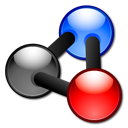1662 – England
The volume of a given mass of a gas at constant temperature is inversely proportional to its pressure
If you double the pressure of a gas, you halve its volume. In equation form: pV = constant; or p1V1 = p2V2 where the subscripts 1 & 2 refer to the values of pressure and volume at any two readings during the experiment.
Born at Lismore Castle, Ireland, Boyle was a son of the first Earl of Cork. After four years at Eton College, Boyle took up studies in Geneva in 1638. In 1654 he moved to Oxford where in 1656, with the philosopher John Locke and the architect Christopher Wren, he formed the experimental Philosophy Club and met ROBERT HOOKE, who became his assistant and with whom he began making the discoveries for which he became famous.
In 1659, with Hooke, Boyle made an efficient vacuum pump, which he used to experiment on respiration and combustion, and showed that air is necessary for life as well as for burning. They placed a burning candle in a jar and then pumped the air out. The candle died. Glowing coal ceased to give off light, but would start glowing again if air was let in while the coal was still hot. In addition they placed a bell in the jar and again removed the air. Now they could not hear it ringing and so they found that sound cannot travel through a vacuum.
He proved Galileo’s proposal that all matter falls at equal speed in a vacuum.
Boyle established a direct relationship between air pressure and volumes of gas. By using mercury to trap some air in the short end of a ‘J’ shaped test tube, Boyle was able to observe the effect of increased pressure on its volume by adding more mercury. He found that by doubling the mass of mercury (in effect doubling the pressure), the volume of the air in the end halved; if he tripled it, the volume of air reduced to a third.
His law concluded that as long as the mass and temperature of the gas is constant, then the pressure and volume are inversely proportional.
Boyle appealed for chemistry to free itself from its subservience to either medicine or alchemy and is responsible for the establishment of chemistry as a distinct scientific subject. His work promoted an area of thought which influenced the later breakthroughs of ANTOINE LAVOISIER (1743-93) and JOSEPH PRIESTLY (1733-1804) in the development of theories related to chemical elements.
Boyle extended the existing natural philosophy to include chemistry – until this time chemistry had no recognised theories.
The idea that events are component parts of regular and predictable processes precludes the action of magic.
Boyle sought to refute ARISTOTLE and to confirm his atomistic or ‘corpuscular’ theories by experimentation.
In 1661 he published his most famous work, ‘The Skeptical Chymist’, in which he rejected Aristotle’s four elements – earth, water, fire and air – and proposed that an element is a material substance consisting at root of ‘primitive and simple, or perfectly unmingled bodies’, that it can be identified only by experiment and can combine with other elements to form an infinite number of compounds.
The book takes the form of a dialogue between four characters. Boyle represents himself in the form of Carneades, a person who does not fit into any of the existing camps, as he disagrees with alchemists and sees chemists as lazy hobbyists. Another character, Themistius, argues for Aristotle’s four elements; while Philoponus takes the place of the alchemist, Eleutherius stands in as an interested bystander.
In the conclusion he attacks chemists.
“I think I may presume that what I have hitherto Discursed will induce you to think, that Chymists have been much more happy finding Experiments than the Causes of them; or in assigning the Principles by which they may be best explain’d”
He pushes the point further- “me thinks the Chymists, in the searches after truth, are not unlike the Navigators of Solomon’s Tarshish Fleet, who brought home Gold and Silver and Ivory, but Apeas and Peacocks too; For so the Writings of several (for I say not, all) of your Hermetick Philosophers present us, together with divers Substantial and noble Experiments, Theories, which either like Peacock’s feathers made a great show, but are neither solid nor useful, or else like Apes, if they have some appearance of being rational, are blemished with some absurdity or other, that when they are Attentively consider’d, makes them appear Ridiculous”
The critical message from the book was that matter consisted of atoms and clusters of atoms. These atoms moved about, and every phenomenon was the result of the collisions of the particles.
He was a founder member of The Royal Society in 1663. Unlike the Accademia del Cimento the Royal Society thrived.
Like FRANCIS BACON he experimented relentlessly, accepting nothing to be true unless he had firm empirical grounds from which to draw his conclusions. He created flame tests in the detection of metals and tests for identifying acidity and alkalinity.
It was his insistence on publishing chemical theories supported by accurate experimental evidence – including details of apparatus and methods used, as well as failed experiments – which had the most impact upon modern chemistry.



 NEXT
NEXT